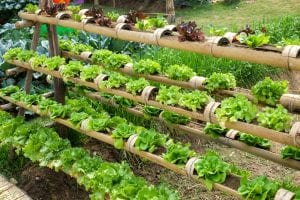 Vertical farming won’t replace conventional farming, but researchers say vertical farming is happening now, and growing.
Vertical farming won’t replace conventional farming, but researchers say vertical farming is happening now, and growing.
Research by Stanford University shows vertical farming is growing and will likely be needed to complement traditional farms to “meet the food demands of tomorrow.” Vertical farming is the practice of producing food in vertically-stacked layers. The farms are in enclosures that provide a controlled environment to grow crops, with high-data monitoring. Stanford says vertical farms offer year-round growing capacities, less water consumption, and improved crop predictability. For example, AeroFarms, a 70,000-square-foot vertical farm in a renovated steel plant in New Jersey, claims 95 percent less water use and 390 times more productivity than a commercial field farm with the same square footage.
The vertical farming market is expected to be worth $5.8 billion, by 2022, according to market research firms.
From the National Association of Farm Broadcasting News Service.










